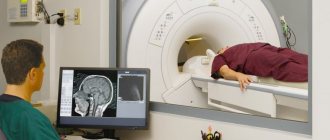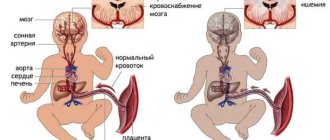Stuttering in children is a pathology associated with speech. Typically, the process of stuttering clearly manifests itself in those moments when the child needs to make a little more effort in speaking than usual , or speak a little louder.
If you notice a speech disorder or hesitation when pronouncing certain consonants in a child, you should immediately consult a doctor.
A little history and reasons for its occurrence
Stuttering, as a speech pathology, arose a very long time ago. Stutterers were found among the ancient Incas, Persian kings, Greek pharaohs, etc. Famous and smartest people of their time often suffered from stuttering. They independently tried to get rid of their own illness in various ways.
The story of Demosthenes is best known to us. This ancient Greek philosopher developed his own system of breathing exercises, which he performed in front of a mirror, pronouncing long phrases in difficult conditions (while climbing a hill, with strong noise of sea waves, with pebbles in his mouth, etc.). Demosthenes also paid great attention to psychogenic training. He was a very timid and impressionable man, but thanks to titanic work he became a great orator, capable of delivering long speeches in front of a crowd of thousands.
The story of Demosthenes, described by Plutarch, is a striking example of the fact that it is possible to get rid of stuttering, but this requires enormous effort. However, it does not shed any light on the causes of stuttering.
Since those ancient times, many researchers have tried to deal with the problem of stuttering treatment. In their opinion, this speech disorder may be due to the following factors:
- stressful situation. In some cases, the speech rate disturbance becomes noticeable at an early age, but many of these children spoke quite normally up to a certain point. Stuttering suddenly arose against the background of a traumatic situation, for example, severe fright. However, many people experienced fear in childhood, and about 2-3% of the world's population become stutterers. These people probably had some predisposition;
- neurological pathology. Disturbances in the functioning of the parts of the central nervous system responsible for speech function can occur against the background of injuries, concussion, or after infectious diseases. Pathology can also develop due to some sluggish chronic diseases;
- hereditary predisposition. If there is a family history of stutterers, then the likelihood of developing this speech disorder becomes higher. It is believed that genetically determined stuttering should manifest itself in the first seven years of life. If this does not happen, it means that the person will no longer have such speech disorders. As a rule, stuttering is passed on through generations, but sometimes children simply imitate the “sloppy” speech of people from their close circle.
The reasons described above are united by one circumstance: they all lead to a weakening of the nervous system. Some people's psyche suffers under the influence of external factors, while others were already born with a weakened nervous system, for example, due to an unfavorable pregnancy. In any case, it is best to begin treatment for stuttering with a consultation with a neurologist.
Reading
- In 2014, Australian doctors announced three successful attempts to transplant dead hearts using new technology. Until this point, only hearts that were still beating were suitable for transplantation if the donor was already brain dead.
- People become infected with coronavirus through respiratory droplets and after touching contaminated objects, after which they develop the disease. Plastic and stainless steel surfaces are the most pathogenic. Maintaining hand hygiene will help prevent the development of infections.
- Energy information therapy can significantly reduce side effects from taking medications and optimize their selection.
- The success of dental implantation largely depends on your general condition, oral hygiene, the density of the jaw system, the experience of your orthopedist and the manufacturer of materials he has chosen for the work.
- Osteoarthritis is a joint disease, a form of arthritis (which is why it is also called osteoarthritis), in which the destruction (partial or complete) of the cartilage of one or more joints occurs.
Features of the pathology
The difficulty in treating stuttering also lies in the fact that this pathology has a large number of forms. This heterogeneity indicates the complexity of the origins of stuttering. This speech disorder is often accompanied by disturbances in the functioning of the muscular system. A stutterer may experience general tension, be stiff and angular, or, conversely, be overly mobile.
People who stutter also have common psychological characteristics:
- Excessive impressionability.
- In the presence of strangers, excessive timidity and embarrassment.
- Vivid fantasy that influences the strengthening of speech defects.
- Weakened strong-willed side of character.
- Fear of having to speak in front of large numbers of people.
As a rule, all stutterers focus heavily on their defect. And the more a person expects a stuttering attack, the stronger it becomes.
In adults, stuttering is often accompanied by psychological problems. This defect makes their life very difficult. Many stutterers cannot get a good job, career growth is not available to them, and they are unable to build relationships with the opposite sex. All this leads to the fact that a stuttering person becomes even more withdrawn. He experiences a feeling of loneliness, against the background of which nephrosis, depression and other mental disorders can develop.
Based on the causes of its occurrence, stuttering is divided into two types.
A speech disorder that occurs at an early age (from 2 to 5 years) is called developmental It can develop gradually, or occur suddenly as a result of individual predisposition or mental trauma. Evolutionary stuttering is usually called neurotic (logoneurosis) and neurosis-like.
The second type of stuttering is secondary or symptomatic . This speech pathology occurs against the background of other diseases, for example, head injury, epilepsy, etc.
Complications
When stuttering, psychological problems often arise, which can be quite difficult to cure.
A person with speech problems becomes withdrawn, suspicious, and experiences depression and suicidal thoughts. Some patients experience attacks of severe aggression that are dangerous to others. Consequences of speech disorders:
- vegetative and extrapyramidal abnormalities;
- increased intracranial pressure;
- dilated pupils;
- poor posture, osteochondrosis;
- deterioration of the vestibular apparatus;
- flat feet.
Correction methods
Stuttering, like other diseases, is easier to correct in the early stages. In some cases, it is possible to get rid of this speech disorder in just a few weeks. But most often it takes much longer.
As mentioned above, treatment should begin with a visit to a neurologist. The doctor will conduct an examination, the purpose of which will be to identify the causes of speech dysfunction. If stuttering is caused by a malfunction of the central or peripheral nervous system, then the patient will be prescribed adequate drug treatment. In addition, the following specialists will treat stuttering:
- reflexologist. To eliminate stuttering, it is important to get rid of muscle tension localized in the shoulder girdle, neck and abdomen;
- psychotherapist. Modern psychotherapeutic techniques will help to identify the psychological causes of the problem and eliminate them. As a result, you can not only normalize speech, but also completely change your life for the better. Become more confident in your own abilities, learn to get out of difficult life situations, improve relationships with people around you, etc.;
- speech therapist. Special speech therapy exercises will allow you to develop correct speech breathing, learn to pronounce sounds, control the speed of speech and its tempo.
Comprehensive treatment and constant work on yourself will allow you to achieve lasting results in the shortest possible time.
It should be remembered that a one-time visit to a speech therapist will not help. You should also not count on the fact that the doctor will give you a “miracle pill” and your stuttering will disappear. This speech disorder will only go away if the stutterer strictly follows the recommendations of all specialists throughout the course of treatment.
Treatment options
In modern speech therapy, defectology and psychiatry, methods developed in the last century by Soviet specialists are used in the treatment of stuttering.
There are several methods, but they do not have fundamental differences. When working with children, a set of pedagogical and speech therapy techniques is usually used. But when treating adults, more attention is paid to the psychological component of the problem using psychotherapeutic and medicinal methods.
Traditional stuttering correction methods usually consist of several stages, each of which requires careful work on the previous one:
- Preparation. Over the course of 2 or 3 days, the patient undergoes diagnostics. He is examined by doctors of various specializations, as well as a speech therapist.
- Installation. Once the patient's condition has been assessed, speech therapy is offered. Group therapy is often used at this stage. People who stutter and have had success in the fight against their illness are invited to the meeting. They share their experience, giving other stutterers incentive to work on themselves.
- Silence. Limiting speech communication is an important step in the correction of all types of stuttering. The patient should not speak for about 5 days, after which a period of moderate speech rest begins. At this stage, the stutterer learns the techniques of reflected and conjugate speech, actively engages in articulatory gymnastics, and performs speech breathing exercises.
- Restructuring speech skills. This is the longest stage and can last about four weeks. We can say that during this time a person must literally learn to speak again. He will have to prepare conversations on the proposed topics, retell texts, work on dialogues, etc.
- Consolidation of results. The acquired skills must be brought to automaticity.
Quite often the treatment ends with some kind of meeting or theme evening. All patients must prepare a performance, they can read poetry, participate in theatrical performances, etc. This is necessary not only to demonstrate success in treatment. In this way, you can get rid of the fear of speaking in public and build confidence in your own abilities.
Participation in school plays helped Bruce Willis get rid of his stuttering. He began stuttering in his teens, after his parents divorced and he entered high school. By working on himself, Bruce was able to become the president of the student council, and much later, become a world-famous actor.
Some popular techniques include psychotherapy. Hypnotherapy is successfully used to correct stuttering, and patients are also recommended to conduct self-hypnosis sessions. To relieve muscle tension, during correctional work, patients can engage in physical therapy, they may be recommended massage and other relaxing procedures.
Diagnostics
The basis of research for speech problems is the collection of anamnesis; it is important for the doctor to determine when and after what stuttering occurred. Who treats stuttering? For a final diagnosis, you need to consult with a speech therapist, psychologist, neurologist, and do neuropsychological testing.
Diagnosis of children and adults with stuttering includes:
- CT scan of the brain;
- diagnostics of hearing, speech memory, oral speech;
- MRI of the brain;
- EEG, REG.
The diagnosis of stuttering is made if the number of breaks per 100 words is more than 10%, while the duration of the pause exceeds 1 second, accompanied by severe muscle tension.
Modern techniques
Treatment of stuttering according to the traditional scheme, used by a large number of specialists, requires a long time. Moreover, not in all cases it allows you to achieve the desired result. Therefore, many stutterers try to independently look for ways to get rid of this speech disorder.
Today, Andrei Kuznetsov’s book “Stuttering: the stake is life” , in which the author talks about his own experience. Andrey stuttered since childhood, just like his older brother and grandfather, considering his disease incurable. This disorder made life very difficult for the young man, so at the age of 25 he began to study this problem on his own. As a result, Andrei came to the conclusion that all his life he had been taught to stutter, instead of being taught to speak! Kuznetsov’s work culminated in the development of a unique method for getting rid of stuttering.
There is something similar in the methodology of Academician R.A. Snezhko . He also believes that stuttering occurs as a result of a person not knowing how to pronounce sounds correctly. At his sessions, Roman Alekseevich teaches patients to distinguish between the names of letters and the pronunciation of sounds, to place stress correctly, to divide words into syllables, etc.
Classes using both methods will be useful to everyone without exception. But if stuttering is caused by damage to the central nervous system, then it is unlikely to be possible without the help of a neurologist.
Prevention
To avoid speech abnormalities of a neurological nature, you need to create a favorable microclimate in the family and avoid stress. Sports, proper rest, listening to classical music, and drawing help a lot.
Parents need to monitor their speech when the child begins to talk - speak smoothly, calmly, clearly. You cannot repeat the baby’s babble; all words must be pronounced correctly, they must be simple and understandable.
Regular strengthening of the immune system, proper nutrition, adherence to a daily routine and hygiene rules will also help prevent speech problems - these factors are necessary for normal mental and speech development.
Stuttering is rare, the disease is diagnosed in approximately 7% of preschool children and 1-3% of adolescents and adults. But this disease is quite complex; it requires long-term complex treatment and regular self-study.
Relaxation and self-massage
You can try to get rid of stuttering on your own. The first thing you should pay attention to is muscular and emotional looseness. These two components provide normal natural speech. Therefore, a stutterer must, first of all, learn to voluntarily relax his muscles, getting rid of excess tension.
Relaxation techniques will help with this. You can perform exercises to tense and instantly relax muscles, they will help create a feeling of contrast between tension and a relaxed state. To perform this, you need to strongly strain, for example, your neck, and then relax it as much as possible. The exercise can be performed on any muscle group.
There are whole sets of exercises that will help you learn to relax your own muscles. To achieve the desired effect, certain rules should be followed when performing them:
- control the strength of muscle tension not only with the help of bodily sensations. Perform exercises in front of a mirror, visually controlling muscle movements, this will make it easier to move on to deep relaxation;
- exercises should be performed daily for 5–7 minutes. As a result, there will be no overstrain when using the speech muscles when speaking;
- the complex should include exercises not only for the speech apparatus. When stuttering, it is important to reduce muscle tone in the arms, abdomen, shoulders and neck;
- You need to practice slowly, performing the exercises rhythmically. Avoid overwork;
- pay attention to your breathing - it should be free.
After all the exercises have been mastered, you can complicate them a little by adding phonation. Start speaking at a moment of relaxation, pronouncing vowel sounds and their combinations smoothly and slowly. Then move on to pronouncing syllables and whole words.
Self-massage will help you get rid of tension or, conversely, increase the tone of weak muscles. It comes in two types: hygienic and vibration. In the first case, the procedure is performed by stroking. This activates the nerve endings located close to the skin and normalizes the tone of the facial and facial muscles. Vibration massage involves the use of vigorous tapping to activate deep nerve endings.
You can learn relaxation and self-massage techniques on your own, for example, using the Internet. But you can also turn to specialists for help. An experienced doctor will not only show the basic techniques, but will also monitor the correctness of the procedures, point out errors, and also select the most effective exercises and methods.
Pathogenesis of stuttering
The pathogenesis of stuttering is based on an uncontrolled convulsive speech disorder of the type of systemic neuromotor failure. It is primarily associated with disruption of the basal ganglia, which regulate the duration of muscle movements and the phonetic implementation of speech elements.
When stuttering, the sequence of changes in signals for the beginning and end of speech elements is disrupted:
- If the completion signal of the previous element is not strong enough, it is repeated again. This is how typical clonic stuttering develops - repetition of sounds and syllables.
- If the speech apparatus receives a command to voice the next sound, but the previous signal has not yet been completed, then the sequence of speech formation is suspended and tonic stuttering develops - pauses or prolongation of sounds.
The occurrence of stuttering is also associated with genetic disorders. Since 2010, researchers at the National Institute of Deafness and Other Communication Disorders (NIDCD) have identified four different genes in which mutations are associated with stuttering. These include the gene on chromosome 12, as well as the GNPTAB, NPTG and NAGPA genes. Mutations in these genes occur in 6% of people who stutter.
The probable pathogenesis of stuttering is associated with overexcitation of the right hemisphere of the brain and interhemispheric disorders of the rhythmic component of speech. When stuttering, disorganization occurs at the level of the cerebral cortex. Because of this, the nonverbal rhythm of speech, associated with the predominance of the work of the right hemisphere, “intensifies”.
But sometimes, when thoughts “overtake” the language, physiological stuttering occurs. It is based on the difficulty in realizing the speech intention at the moment of communication. The probable pathogenesis of such stuttering is linguistically weak functioning of the left hemisphere of the brain, which manifests itself in problems with the implementation of the programmed meaning of the statement.











